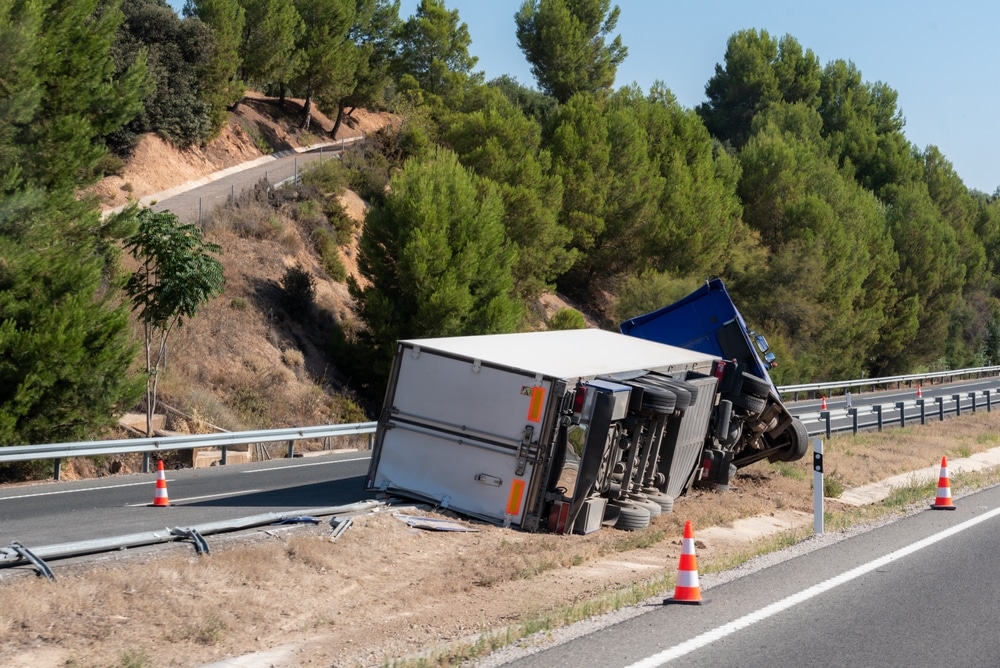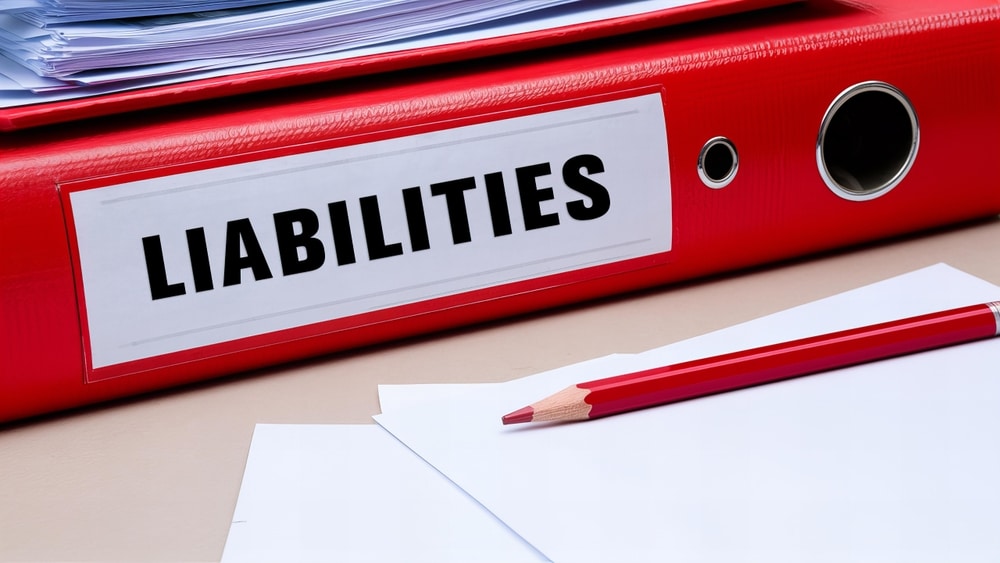Hiring an experienced truck accident lawyer in Oklahoma is critical when pursuing a claim after a crash. Federal regulations allow trucking companies to discard key records in as little as six months, and state law sets strict deadlines that differ from standard auto accident cases. A lawyer helps you navigate the claim process, identify liable parties, uncover available insurance coverage, and ensure your case is filed before important deadlines expire.
Key Takeaways for How to File A Truck Accident Claim in Oklahoma
Multiple parties beyond the driver may share liability, including the motor carrier, trailer owner, cargo loader, broker, and maintenance provider.
Oklahoma personal injury claims must be filed within two years under 12 O.S. §95, but government vehicle accidents require written notice within one year under 51 O.S. §156.
Federal regulations under 49 CFR 395.8 require trucking companies to keep Electronic Logging Device data and Records of Duty Status for only six months.
Oklahoma follows modified comparative negligence under 23 O.S. §13, allowing recovery if you’re less than 51% at fault.
Under 49 CFR 387.9, Interstate truckers must carry a minimum liability coverage of $750,000, though many carriers maintain higher limits.
After You’re Safe: First Steps at Home or Hospital
Once you’re home from the hospital or settled after initial treatment, your focus shifts to protecting your claim while managing recovery. Follow every medical recommendation, keep detailed symptom journals, and organize all treatment documentation in one place. Photograph visible injuries daily as they evolve, capturing bruising patterns and healing progression that demonstrate your damages.
The first week after your truck accident proves critical for evidence preservation. Request your official police report—this is often available within days, but timing varies by agency. Preserve your damaged vehicle without authorizing repairs, as damage patterns provide crucial evidence. Direct all insurance company contacts to your attorney, and avoid making any recorded statements that could harm your claim. Insurance adjusters often call within hours, seeking admissions while you’re still processing trauma.
Step-by-Step: How to File a Truck Accident Claim in Oklahoma

Step 1: Hire an Experienced Truck Accident Attorney Immediately
Securing legal representation within days of your accident serves multiple critical purposes in the Oklahoma truck accident claim process. Your attorney sends spoliation letters demanding evidence preservation beyond federal minimums, coordinates proper medical documentation, and shields you from aggressive insurance tactics.
The complexity of Federal Motor Carrier Safety Administration regulations, multiple insurance layers, and catastrophic injury valuations demands attorneys with experience with truck accident cases. Early intervention prevents evidence destruction and costly mistakes that permanently damage claim value.
Step 2: Identify All Potentially Liable Parties
Filing a truck accident claim in Oklahoma often involves multiple defendants beyond the driver. Your legal team investigates complex ownership structures and employment relationships to identify every potential compensation source.
A comprehensive liability investigation examines these critical relationships:
- Motor carrier responsibility for driver hiring, training, supervision, and hours of service compliance
- Tractor and trailer ownership, which often involves separate entities with distinct insurance
- Broker liability for negligent carrier selection or unrealistic delivery pressure
- Shipper or loader responsibility for improper cargo securement or overweight violations
- Maintenance provider obligations for inspection failures or inadequate repairs
Each identified defendant typically carries separate insurance coverage, multiplying available compensation sources for catastrophic injuries. The FMCSA SAFER Company Snapshot database reveals DOT numbers, safety records, and insurance information that may be critical to your claim.
Step 3: Preserve Time-Sensitive Evidence Before Federal Deadlines
When you’re filing a truck claim in Oklahoma, you must account for short federal evidence retention periods. Electronic Logging Device (ELD) data and Records of Duty Status (RODS) face destruction after just six months under 49 CFR 395.8. Your attorney sends immediate preservation letters demanding extended retention of all crash-related evidence.
Critical evidence that requires immediate preservation includes:
- ELD/RODS data showing hours of service compliance and driver fatigue
- Engine Control Module (ECM) downloads revealing speed, braking, and mechanical data
- Dashcam footage, forward collision warnings, and lane departure system data
- Bills of lading, weight tickets, and cargo securement documentation
- Driver qualification files, training records, and violation history
- Vehicle maintenance logs and inspection reports
Dispatch communications, cell phone records, and GPS tracking face even shorter retention without legal intervention. Acting within the first month prevents permanent evidence loss that weakens your claim.
Step 4: Document All Economic and Non-Economic Damages
Comprehensive damage documentation forms the foundation of your Oklahoma truck accident claim. Medical experts develop life care plans that project future treatment costs, while vocational specialists assess lost earning capacity. Economic damages include past and future medical expenses, lost wages, diminished earnings, property damage, and out-of-pocket costs.
Your daily symptom journal helps establish non-economic damages for pain, suffering, and lost life enjoyment. Family observations and psychological evaluations demonstrate the accident’s broader impact beyond medical bills.
Step 5: Prepare and Submit Your Demand Package
Once medical treatment stabilizes, your attorney prepares a comprehensive demand package for the insurance companies. This document weaves together liability evidence, medical documentation, expert opinions, and damage calculations into a persuasive narrative justifying your compensation demand.
Strategic negotiations consider available coverage limits, liability strength, and litigation risks. The demand package initiates formal settlement discussions while preserving your right to file suit if offers prove inadequate.
Step 6: File Your Lawsuit Before Oklahoma Deadlines
When negotiations fail to produce fair compensation, filing suit becomes necessary. The Oklahoma statute of limitations for personal injury under 12 O.S. §95 requires filing within two years. Government vehicle claims need written notice within one year under 51 O.S. §156.
Your lawsuit names all liable parties, alleges specific violations, and demands appropriate damages. Discovery proceedings uncover additional evidence through depositions, document production, and expert examinations. Complex truck cases might require accident reconstruction experts, federal regulation specialists, medical professionals, and economic analysts.
Step 7: Pursue Resolution Through Settlement or Trial
Many Oklahoma truck accident claims settle through negotiation, avoiding trial risks and delays. Mediation provides structured negotiation with neutral facilitators. However, maintaining credible trial readiness demonstrates your willingness to present the case to an Oklahoma jury if necessary.
Settlement discussions continue throughout litigation, with resolution possible at any stage. Trial preparation includes witness preparation, exhibit development, and jury research, focusing on venue-specific attitudes toward trucking safety.
Step 8: Navigate Post-Resolution Procedures
After reaching a settlement or obtaining a verdict, your attorney handles liens, structures settlements for tax efficiency, and manages proper fund distribution. Medical providers, health insurers, and government benefit programs may claim portions of your recovery.
Structured settlements or trusts may optimize long-term financial security for catastrophic injury victims. Your legal team coordinates these complex financial arrangements while protecting your interests.
Who May Be Liable Besides the Driver in an Oklahoma Truck Crash

Oklahoma truck accidents often involve multiple liable parties beyond the driver behind the wheel. The motor carrier bears vicarious liability for employee drivers while facing direct liability for negligent hiring, training, supervision, and hours of service violations. Carriers who employ drivers with poor safety records, inadequate training, or disqualifying medical conditions face negligent entrustment claims.
Vehicle ownership creates additional liability layers. Many trucking operations separate tractor and trailer ownership between different entities, each carrying distinct insurance. Owner-operators may lease equipment from third parties who maintain legal ownership and liability exposure.
Additional parties who potentially share liability in a truck accident claim include:
- Cargo loaders whose improper weight distribution or inadequate securement causes accidents
- Brokers who negligently select unsafe carriers or pressure unrealistic delivery schedules
- Maintenance providers who perform inadequate repairs or falsify inspection records
Equipment manufacturers may be liable for defective truck components that cause mechanical failures. Government entities responsible for dangerous road conditions could share responsibility. Each liable party represents a separate insurance policy and compensation source.
Oklahoma Statute of Limitations and Comparative Negligence Rules
Oklahoma law establishes strict deadlines for filing truck accident claims. Personal injury claims must be filed within two years under 12 O.S. §95. This deadline applies rigidly with limited exceptions for minors or incapacitated victims.
Government vehicle accidents follow different rules under 51 O.S. §156, requiring written notice within one year. Missing these deadlines permanently bars your claim regardless of injury severity or clear liability.
Oklahoma’s modified comparative negligence system under 23 O.S. §13 affects damage recovery when you share fault. The Oklahoma comparative negligence 51 percent rule allows recovery only if you’re less than 51% responsible.
Your damages are reduced by your fault percentage, so, for example, a $1 million verdict becomes $750,000 if you’re found to be 25% at fault. Insurance companies aggressively push fault onto victims, making strong legal representation essential.
Commercial Truck Insurance Limits in Oklahoma
Federal regulations establish minimum insurance requirements for interstate trucking operations. Under 49 CFR 387.9, most property carriers must maintain at least $750,000 in public liability coverage. Hazardous material transporters face higher requirements, reaching $5 million.
However, catastrophic truck accidents often generate damages exceeding federal minimums. Many carriers maintain excess or umbrella policies providing additional coverage layers. Large trucking companies frequently carry $5-10 million or more, recognizing their exposure to severe injury claims.
Your attorney uses the carrier’s insurance limits to evaluate settlement offers and plan litigation strategy. The MCS-90 endorsement may require the insurer to satisfy a judgment despite certain exclusions, subject to reimbursement. Multiple defendants mean multiple policies are potentially available for your recovery.
Common Insurance Company Tactics After Oklahoma Truck Accidents
Insurance companies representing trucking interests employ aggressive tactics to minimize claim values. Quick settlement offers that arrive within days of your accident rarely reflect full compensation, targeting victims before they understand their injuries or rights. In some cases, these tactics may rise to the level of insurance bad faith, where carriers unfairly delay, deny, or underpay valid claims.
Recorded statement requests seek damaging admissions while you’re traumatized and possibly medicated. Seemingly innocent questions about pre-existing conditions or accident details become weapons against you later. Insurance investigators conduct surveillance, monitor social media, and photograph daily activities, seeking evidence to minimize your injuries.
Insurance adjusters also request unnecessary medical authorizations accessing unrelated records. They delay legitimate claims hoping financial pressure forces cheaper settlements. Experienced legal representation levels the playing field against insurance companies that have unlimited resources dedicated to minimizing or denying payouts.
Evidence Checklist: What to Bring to Your Free Consultation
Bringing key documents to your legal consultation helps attorneys evaluate your Oklahoma truck accident claim efficiently. Bring any available police reports, along with photographs from the accident scene showing vehicle damage, road conditions, and visible injuries.
Essential documents for your consultation include:
- Medical records, discharge summaries, and treatment plans documenting injuries
- Employment information including pay stubs and tax returns for wage loss claims
- Insurance policies for your vehicle and health coverage
- Any correspondence from insurance companies or the trucking company
- Witness names with contact information
- Repair estimates or total loss documentation for your vehicle
- Bills and receipts for all accident-related expenses
Even partial documentation helps attorneys begin investigating while pursuing missing records through legal channels.
Oklahoma Truck Accident Resources and Filing Locations
Several resources are available to assist truck accident victims who are navigating the claim process. The FMCSA Company Snapshot tool reveals carrier safety records, insurance information, and violation history. The Oklahoma Highway Safety Office maintains crash statistics identifying dangerous corridors.
For filing locations, you can access Oklahoma federal courts when diversity jurisdiction applies. The Northern District of Oklahoma (Tulsa) handles many Tulsa-area cases, while the Western District of Oklahoma covers Oklahoma City. The Eastern District of Oklahoma serves Muskogee, McAlester, and southeastern counties. State court venues depend on where the accident occurred and defendant locations.
Major trauma centers treating truck accident victims include OU Medical Center and Integris Baptist in Oklahoma City, plus Saint Francis and Hillcrest Medical Centers in Tulsa. These facilities provide specialized care for catastrophic injuries common in commercial vehicle crashes.
FAQ for How to File a Truck Accident Claim in Oklahoma
How long do I have to file a truck accident claim in Oklahoma?
How long do I have to file a truck accident claim in Oklahoma?
Oklahoma law provides two years from your accident date to file a personal injury lawsuit under 12 O.S. §95. However, accidents involving government-owned vehicles require written notice within one year under 51 O.S. §156. These deadlines apply strictly—missing them permanently bars your claim regardless of injury severity or clear liability.
What evidence proves an Oklahoma truck claim if ELD logs expire after six months?
Electronic Logging Device data and Records of Duty Status face deletion after six months under federal regulations. Your attorney promptly sends preservation letters to prevent critical evidence from being destroyed. Beyond ELD data, your claim relies on evidence such as ECM downloads, dashcam footage, maintenance records, bills of lading, witness statements, and expert accident reconstruction.
What happens if I am 25 percent at fault under Oklahoma law?
Oklahoma’s modified comparative negligence law under 23 O.S. §13 reduces your recovery by your fault percentage. If you’re 25% at fault in a $500,000 case, you receive $375,000. However, if you’re 51% or more at fault, you recover nothing. Insurance companies aggressively push fault onto victims, making strong legal representation critical.
Do I need to give a recorded statement to the trucking insurer?
No. Oklahoma law doesn’t require providing recorded statements to insurance companies. These statements may harm your claim. Direct all insurance communications to your attorney, who protects your interests during the claim process.
What insurance applies to an Oklahoma truck accident claim?
Multiple insurance policies typically apply. The trucking company must carry minimum coverage under federal law—usually $750,000 for non-hazardous cargo. Many carriers maintain higher limits through excess or umbrella policies. Additional coverage may come from trailer owners, brokers, and other liable parties. The MCS-90 endorsement may require the insurer to satisfy a judgment despite certain exclusions.
Getting Help With Your Oklahoma Truck Accident Claim

Filing a truck accident claim in Oklahoma demands immediate action to preserve evidence and meet strict deadlines. Federal regulations allow crucial evidence destruction within months, while insurance companies work aggressively to minimize your recovery. The complex web of liable parties, insurance layers, and catastrophic damages requires experienced legal guidance.
Carr & Carr Injury Attorneys has helped Oklahoma truck accident victims since 1973, understanding the devastating impact these crashes create. We handle cases statewide on a contingency fee basis, advancing all costs and collecting fees only upon successful recovery. Past results do not predict future outcomes, but our decades of experience provide the knowledge and resources necessary for complex truck accident litigation.
Contact our Oklahoma City office at (405) 691-1600 or our Tulsa office at (918) 747-1000 for a free consultation about your truck accident claim. We can meet you at home or in the hospital if injuries prevent office visits. Don’t let critical evidence disappear while insurance companies build their defense—call today to protect your rights and pursue full and fair compensation.





